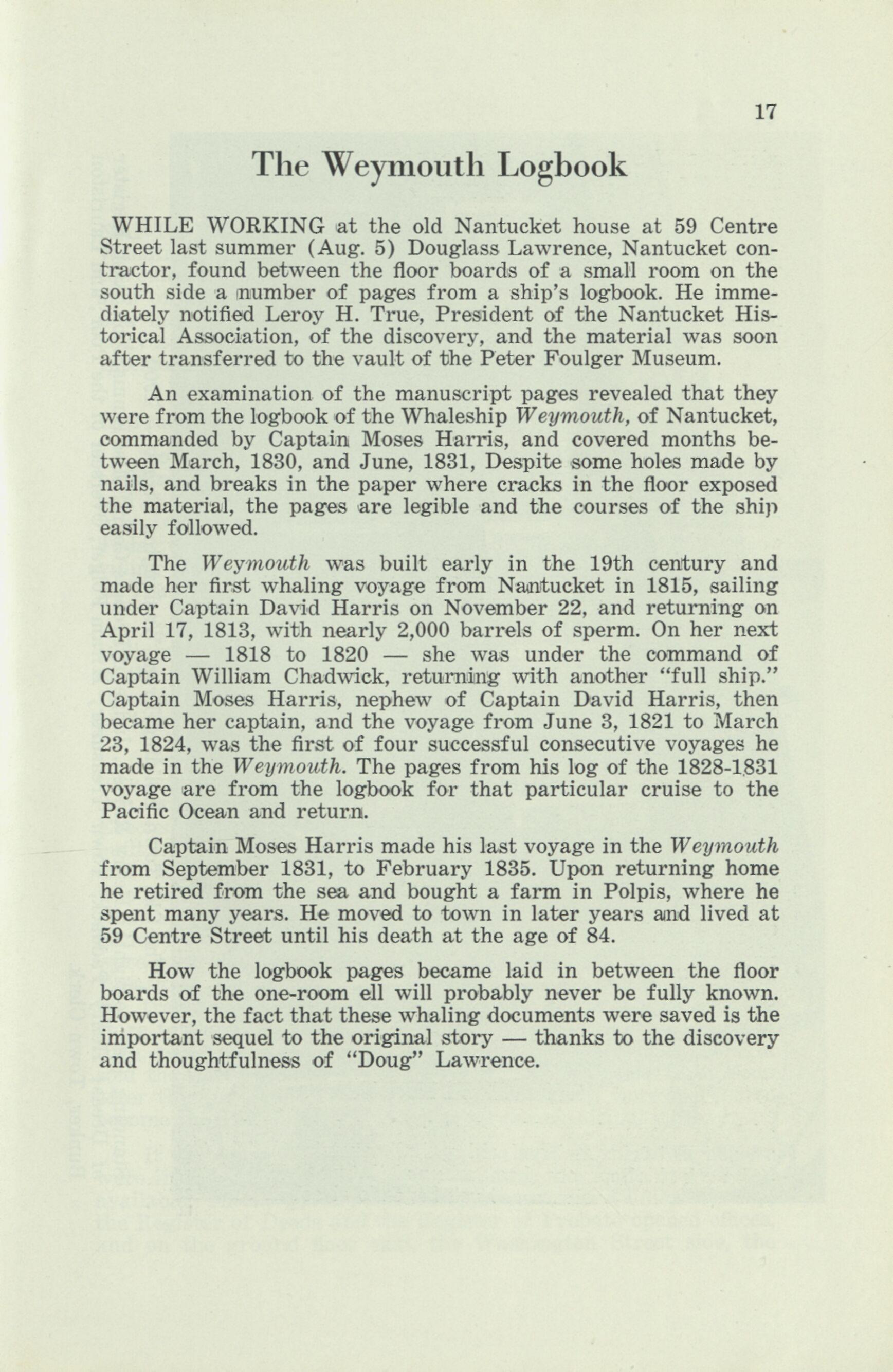
1 minute read
The Weymouth Logbook
17
WHILE WORKING at the old Nantucket house at 59 Centre Street last summer (Aug. 5) Douglass Lawrence, Nantucket contractor, found between the floor boards of a small room on the south side a number of pages from a ship's logbook. He immediately notified Leroy H. True, President of the Nantucket Historical Association, of the discovery, and the material was soon after transferred to the vault of the Peter Foulger Museum.
An examination of the manuscript pages revealed that they were from the logbook of the Whaleship Weymouth, of Nantucket, commanded by Captain Moses Harris, and covered months between March, 1830, and June, 1831, Despite some holes made by nails, and breaks in the paper where cracks in the floor exposed the material, the pages are legible and the courses of the ship easily followed.
The Weymouth was built early in the 19th century and made her first whaling voyage from Nantucket in 1815, sailing under Captain David Harris on November 22, and returning on April 17, 1813, with nearly 2,000 barrels of sperm. On her next voyage — 1818 to 1820 — she was under the command of Captain William Chadwick, returning with another "full ship." Captain Moses Harris, nephew of Captain David Harris, then became her captain, and the voyage from June 3, 1821 to March 23, 1824, was the first of four successful consecutive voyages he made in the Weymouth. The pages from his log of the 1828-1831 voyage are from the logbook for that particular cruise to the Pacific Ocean and return.
Captain Moses Harris made his last voyage in the Weymouth from September 1831, to February 1835. Upon returning home he retired from the sea and bought a farm in Polpis, where he spent many years. He moved to town in later years and lived at 59 Centre Street until his death at the age of 84.
How the logbook pages became laid in between the floor boards of the one-room ell will probably never be fully known. However, the fact that these whaling documents were saved is the important sequel to the original story — thanks to the discovery and thoughtfulness of "Doug" Lawrence.










